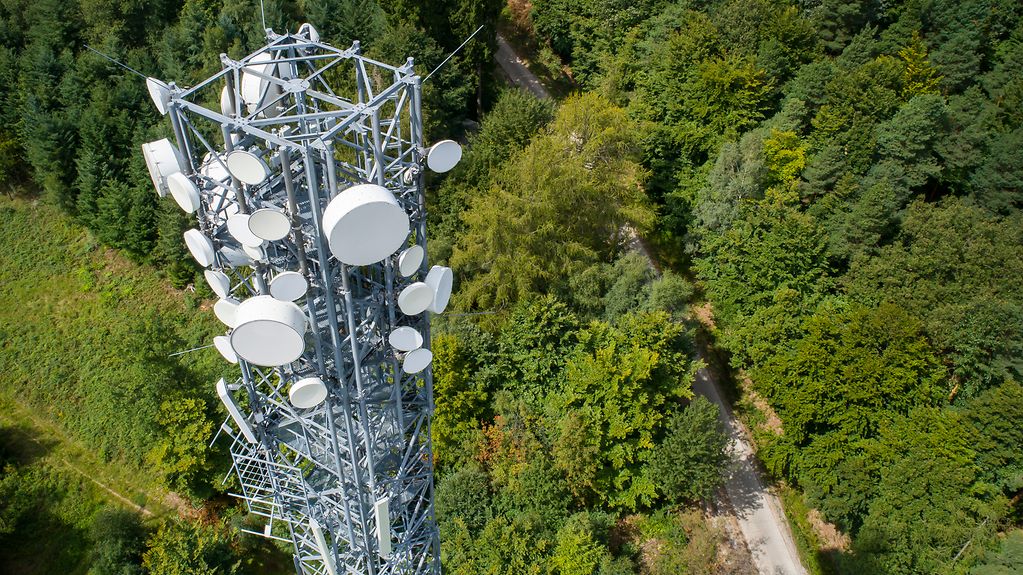Mobile communications strategy
At the digital retreat in Schloss Meseberg, the German government finalised its mobile communications strategy. "Dead zones" are soon to be things of the past. At the same time the government laid the foundations for the swift, successful roll-out of 5G in Germany.
2 min reading time

To develop mobile communications in rural areas, authorisation procedures for the construction of mobile phone masts are to be simplified
Photo: Getty Images/ollo
One core measure laid out in the strategy is the founding of a mobile infrastructure society which will be responsible for actively supporting and accelerating the expansion of the country’s mobile communications system. It is to relieve much of the burden currently borne by local authorities. With about 1.1 billion euros to be invested from the Special Fund for Digital Infrastructure, the plan is to build up to 5,000 additional mobile phone masts.
Simpler authorisation procedures
The construction of mobile phone masts is also to be facilitated by introducing simpler authorisation procedures and allowing masts to be erected in more places. More use is to be made of building belonging to federal, state and local government. There are also plans for additional research parallel to this and a communication campaign that addresses the concerns of the people, especially with regard to alleged health hazards posed by electromagnetic fields.
99.95 households to be covered
"5,000 masts would ensure coverage for 99.95 per cent of households and 97.5 per cent of the country’s landmass," explained Federal Minister of Transport and Digital Infrastructure, Andreas Scheuer, after the meeting. This applies to the period up to 2024. Mobile providers had already pledged to build another 6,000 masts. The German government will ensure coverage for the few remaining, particularly isolated households, where the costs of ensuring standard coverage would be prohibitively high, using alternative technologies such as satellites rather than terrestrial sites.
It is very important to ensure people and the environment are protected against electromagnetic fields, and this will be the case in future too. The German government intends to retain the existing level of protection when 5G is rolled out.
Support for rural areas
There is also to be a focus on serving rural settlements in particular that have no prospects of mobile communications coverage in the long term without state assistance. To ensure that agriculture and forestry can use modern technologies, 5G frequencies are available for local networks at very moderate costs. To make it possible to develop networks of this sort to meet the specific needs of farmers, an assistance programme is to help establish the networks.
100 per cent coverage would cost 15 billion euros, according to a study conducted for the Federal Ministry of Transport and Digital Infrastructure. 30 per cent of Germany’s land mass is accounted for by undeveloped natural areas. The German government will explore ways of guaranteeing an emergency distress call system, specifically in remote natural areas.